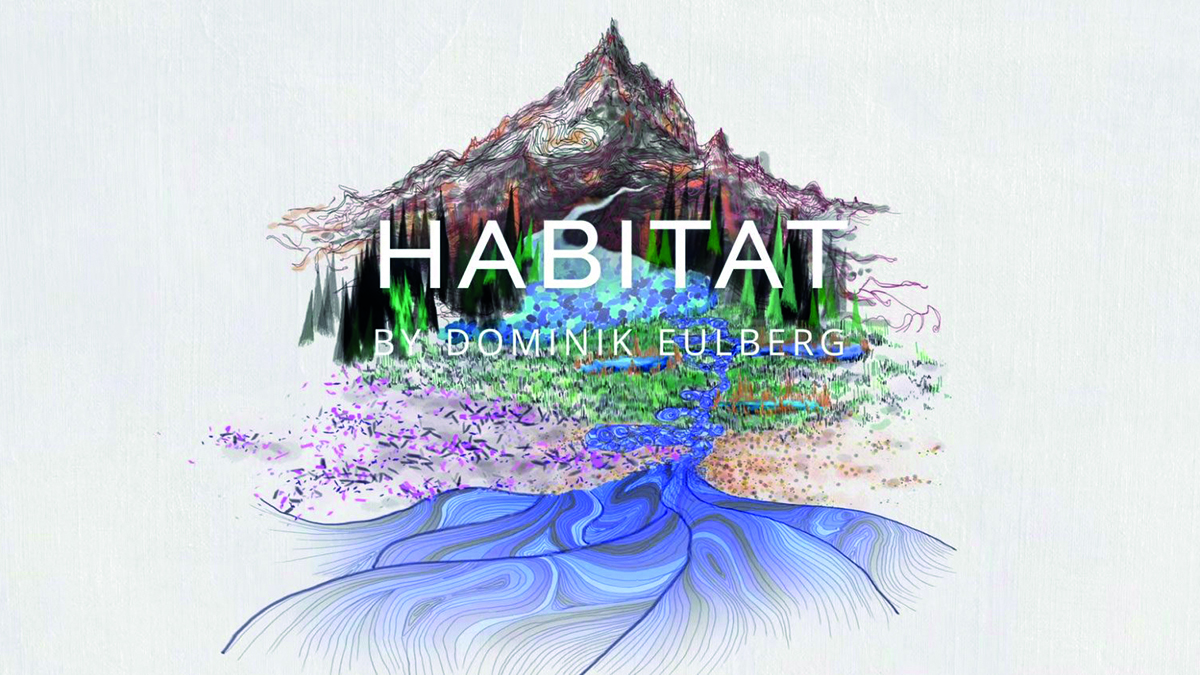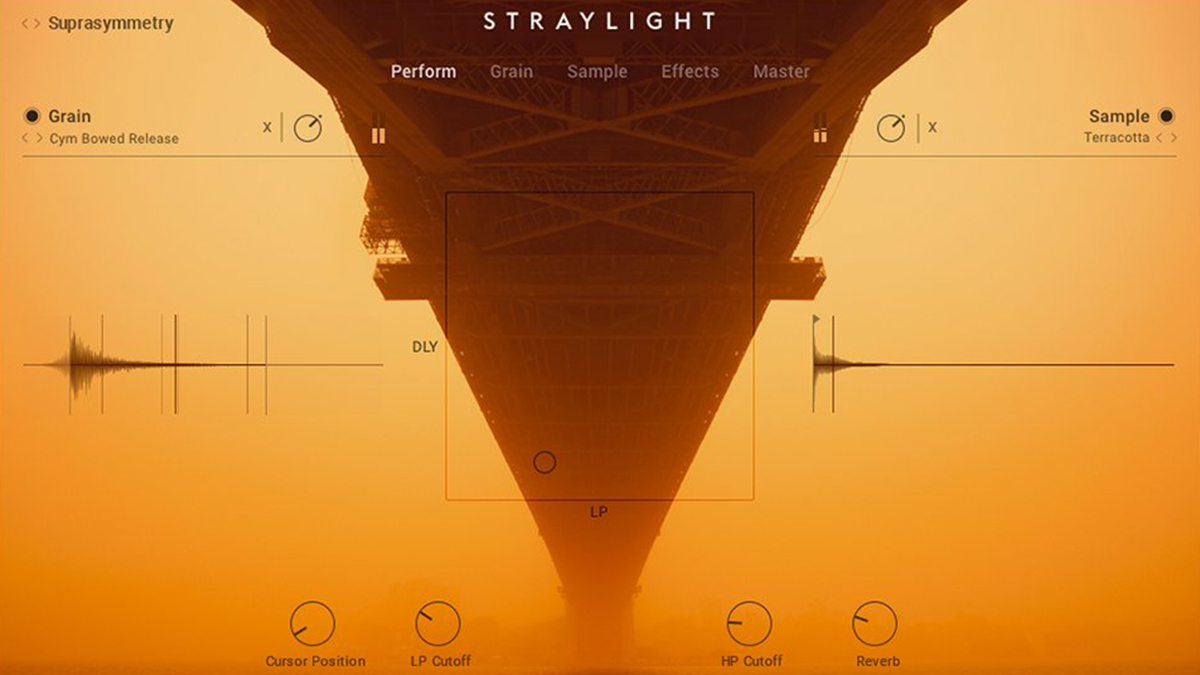MusicRadar Verdict
If textures and pads are a common requirement for you, Habitat is a class leader in sonic diversity and interest.
Pros
- +
Unique and engaging library.
- +
Blend of electronics/acoustic textures.
- +
The FX channel alone offers treasures.
- +
Patch elements conveniently available for individual purchase.
Cons
- -
Patch naming a tad esoteric.
- -
SINEplayer patch auditioning tricky.
MusicRadar's got your back
Orchestral Tools Habitat: What is it?
Habitat is the culmination of a partnership between Orchestral Tools and polymath Dominik Eulberg; apart from his professional career as a producer working in electronic music, Eulberg is also a trained biologist, conservationist, artist and author. His working environment is heavily influenced by nature, being set in the heart of Germany’s Westerwald mountain range.
Habitat operates within OT’s SINEplayer plugin format, providing layering between synthetic and electronic sounds, and orchestral instrumentation. The brief for this suite is to create interesting textures and pads, but with an earthiness and degree of control that allows the user to sculpt the musical form very easily.

Orchestral Tools Habitat: Performance and verdict
The patches are organised into 11 different categories; the first 10 contain instrumental elements for creating pads and textures, while the 11th category is entirely comprised of Atmospheres. These atmospheric elements from nature have been recorded on location by renowned sound recordist Jan Heft. Recordings from mountains, forests and streams are presents here in a literal form, although these elements are also scattered throughout the library, combined with some of the acoustic and electronics textures.

• Native Instruments Straylight
Also provides layers, with granular control for unique, endearing pad-like cinematic constructs.
• Spitfire Audio LCO Textures
Recorded in a huge aircraft hanger, coupling live instrumentation with natural, almost infinite acoustics.
Heading back to the first 10 categories, these all conform to the same concept, each containing eight different patches based around one of the four seasons, with a day or night iteration. You are therefore presented with 80 musical patches, across the various naturalistic categories.
We begin with the first category called Mountains and the patch called Spring Day; layered with synthetic swells, and a sheen of acoustic strings, somehow the patch name indicates what we have here, with a bright and optimistic outlook. In the performance of the sounds, it’s vital to impress how important the use of the modulation wheel will be. All of the patches exist on two layers, with the modulation wheel providing a seesaw-style blend between the two. On top of this, there is a hearty mix of effects, which helps to amplify the overall textural construct. These are not sounds for melodies or basslines, but they are exceptionally interesting for creating impressive backdrops that can evolve and build, as you guide your harmony while balancing the layers.

Eulberg’s stamp on this library is incredibly appealing. He has created an impressive hierarchy of synthetic elements, sourced from some of the classics of yesteryear alongside current models. These include classic polys such as the Prophet-5 and Jupiter 8, with modern offerings from the Moog One and Deckard’s Dream Mk2. Where the original machines might only produce a monophonic signal, he has re-recorded the synth on a second pass, to create a unique stereo signal. You can hear this organic approach throughout the library, with the blend between the acoustic and synthetic elements often feeling very natural, despite the acoustic/electronic juxtaposition.
One such patch collection where these elements beautifully jar is within the Meadow section. The Summer Night patch crescendos, through the use of envelope-based pitch ascent, which is mirrored in both synthetic and acoustic layers. There’s more aggression here, providing a degree of diversity against the beauty elsewhere, such as the Lake category, where you can hear the mild swell of the water lapping, with a glistening element, as though the sun is reflecting from the Lake’s surface.
Want all the hottest music and gear news, reviews, deals, features and more, direct to your inbox? Sign up here.
Effecting SINEs
Moving through the patch list in this library, you get a sense that it’s been an enormous labour of love, for all concerned. The overall quality is undeniably impressive, bolstered within OT’s SINEplayer, with the ability to control both the dry and effected instrument channels.
Moving through the library, you get a sense that it’s been an enormous labour of love, for all concerned
As the Effect channel is sampled, these elements can be regarded as an intrinsic part of the sound within each patch, and we found that playing with the FX channel solo yielded yet another pallet of extraordinary sound design.
The SINEplayer itself is still in its infancy; by OT’s own admission, it’s still being developed, and while we found it to be very stable – indeed, we love the way that you can organise patches for quick and easy switching – auditioning patches and scrolling through them can feel slightly arduous and long-winded. There is a Performance page, which will make for lighter work of organising patches for performance, but overall we like the direction of travel for this player, which is beginning to come of age.
As the sun sets…
While you could, in some ways, argue that this sort of adjective-based patch description might make it difficult to find what you want initially, the sounds and their names really do seem to make sense, in quite a literal way. Arguably, these names are no more opaque than the sort of patch names we are used to from other synths and plugins. You quickly get a feel for the sounds that you like, and learn to work and sculpt each patch, to suit your own musical purpose.
You could be forgiven for thinking that much of this library might feel incredibly similar, but there is extreme instrumental diversity throughout, with a great mixture of calm and beauty, coupled with angst and agitation. Despite its overtly naturalistic origins, it can also sound very otherworldly and haunting. But there is no doubt at all that it is the textural control, through the use of MIDI CCs, that brings this library to even greater life, allowing the user to construct and sculpt as they go. In this regard, it is a highly unique library, and a strong testament to the creativity of Orchestral Tools and Dominik Eulberg.
MusicRadar verdict: If textures and pads are a common requirement for you, Habitat is a class leader in sonic diversity and interest.
Orchestral Tools Habitat: The web says
"This exquisite combination of synths fused with orchestral recordings is one of beauty, inspiration, and endless possibility."
Sample Library Review
Orchestral Tools Habitat: Hands-on demos
Orchestral Tools
Christopher Siu
Simeon Amburgey
Sample Library Review
Orchestral Tools Habitat: Specifications
- Works with Orchestral Tools’ SINEplayer – NOTE: Very latest version required!
- SINEarc compressed: 39,3GB / Uncompressed: 101GB.
- 24bit / 48 KHz patches.
- Mac OS 10.13, i5, 4 GB RAM (16+ GB recommended).
- Windows 10, Intel Core i5 or similar (Windows 7 is not officially supported).
- Interfaces: VST, AU, AAX.
- CONTACT: Orchestral Tools
Computer Music magazine is the world’s best selling publication dedicated solely to making great music with your Mac or PC computer. Each issue it brings its lucky readers the best in cutting-edge tutorials, need-to-know, expert software reviews and even all the tools you actually need to make great music today, courtesy of our legendary CM Plugin Suite.

